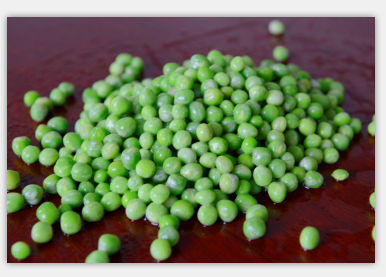The Production Technology of Tuber Seedlings of Osmunda
1. Induction and proliferation of Osmanthus cultivar in vitro The mature spores of Osmunda oleracea were inoculated into an artificial medium to produce filaments, platelets, and protoplasts, which were further cultured and developed into young sporulation test tube seedlings.
1.1 Collection of mature spore leaves In April of each year, mature sporophyll leaves are picked at an altitude of 700 to 1,200 m above sea level, carefully placed in a smooth paper bag, dried for 1 to 2 days, and the sporangia are cleaved to give off a pale green powder. Spores were immediately inoculated or stored in a refrigerator at 4 to 5°C for use.
1.2 Induced spore germination and protoplast formation The green sporoderm was cut off, washed and disinfected, and the spore leaf was cut into small pieces and inoculated in the medium (1/2MS+6-BA0.5+NAA0.01, PH5.8). , placed in a temperature of 25 °C, light 12hrd-1, light intensity 2000lx of the culture room, 7 days after germination of a large number of spores, gradually forming a filamentous body and platelets, 30 days after the formation of about 0.2cm diameter of the original leaf,
1.3 Protoplast culture Protoplasts were cut into small pieces and inoculated into medium (1/2MS + KT5.0 + IBA1.0 + dipotassium phosphate, 200 + activated charcoal 0.5%, PH 5.8), placed at a temperature of 25 °C, and light 12hrd-1, light intensity 2000lx culture conditions. After 60 days, the original leaf volume can be increased by 6 to 7 times.
1.4 Formation of test tube seedlings The protoplasts with loose texture, large plate masses and thick flesh were cut into small pieces and inoculated to the medium (1/2MS+KT5.0+IBA1.0+dipotassium phosphate 200+activated carbon 0.5%). 90 to 120 days of culture, the spore body can be differentiated into test tube seedlings. The spore body seedlings were cut into small pieces and transferred to the medium of strong seedlings (1/2MS + IBA 0.5 + sucrose 20%). After 30 days of culture, the height of the seedlings was about 3 cm, the leaves 3-6, and the roots became more stout. Remove the hardening seedlings.
2. Osmanthus cultivars inoculated with seedlings Management cultivars Osmunda oleracea seedlings have poor adaptability to the natural environment. To grow test-tube seedlings on the soil and have a high survival rate, they must be carefully transplanted and carefully managed.
2.1 Preparation of site for hardening seedlings The hardening seedlings are generally carried out in shade shelters constructed of shade nets to provide 90% to 100% relative humidity, scattered light, and 20 to 25°C temperature conditions. Choose humus-rich mother soil or mountain forest soil, and apply decomposed organic fertilizer, mix, dry, sieve, and disinfect.
2.2 Transplantation and Management The spore body plantlets which grow to a certain size are removed from the culture flasks, and the culture medium is washed off with tap water, and then the individual plantlets or 3 to 4 plants are planted in rows of 5 cm and 5 cm in the nursery soil. In the middle, the edge of the plant was covered with water. After being transplanted, it is strictly managed and the nutrient solution is sprayed twice a day. The survival rate can reach 95%. After 14 days, small arch shelters can be lifted, and they can be transplanted into commercial seedling nursery beds 30 to 50 days later.
3, Osmunda tuberosa seedlings cultivation selection of loose soil, well-drained, semi-yin and yang slopes, applied every 667 square meters farmyard fertilizer 5000kg, deep digging, rake fine, made of width 1m, height 10cm sorghum, will be refining Miaocheng live plant 7 ~ 7cm high young spore plantlets per plant row spacing 10cm10cm planted, completely covered with roots, pouring enough water after planting. After every 7 days of survival, topdressing a thin fertilizer water, timely weeding the weeds, after the winter seedlings stop growing, cover 5cm thick straw on the seedbed to overwinter and remove the cover before germination the following spring. Young sporophyte seedlings were planted on the seedbed for 1 year, and 10 to 15 cm tall seedlings could be planted in the field or sold.
Author: Department of Bioengineering, Three Gorges Vocational and Technical College, Hubei Province
Green Peas, According to the color of their cotyledons, Peas are divided into two types: green skin, green peas, and
green skin yellow peas. Green peas are green-green peas. Peas in northeast China are the most famous. It is one of China's
important food crops. It has a history of 5,000 years of cultivation. Our company can provide two different frozen peas to meet the needs of different people.
The effect and effect of green peas
Daily
green peas can provide catechins and epicatechins as two kinds of
flavonoid antioxidants. When people get older, there will be more and
more free radicals in the body. Free radicals and aging are positively
related. Nutrition in green beans can resist. Free radical-induced diseases, delaying the speed of body aging, as well as anti-inflammatory, spectral antibacterial effects.
Kidneys of green peas
[Appropriate
population] Green peas are suitable for menopausal women, diabetes and
cardiovascular patients, and mental workers and dieters are also very
suitable for eating green Peas. These people can eat green beans to
improve disease and physical condition.
[Contrained
people] People with severe liver disease, peptic ulcer,
arteriosclerosis, kidney disease, gout, low iodine and other diseases
are not to eat green peas, so as not to aggravate the condition.

Frozen Green Peas,Green Peas Ifq,Wholesale Frozen Green Peas,Chinese Style Green Peas,Bulk Frozen Vegetables
LETING JINTIAN FRUIT AND VEGETABEL CO., LTD. , http://www.chinafrozenvegetable.com
